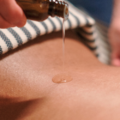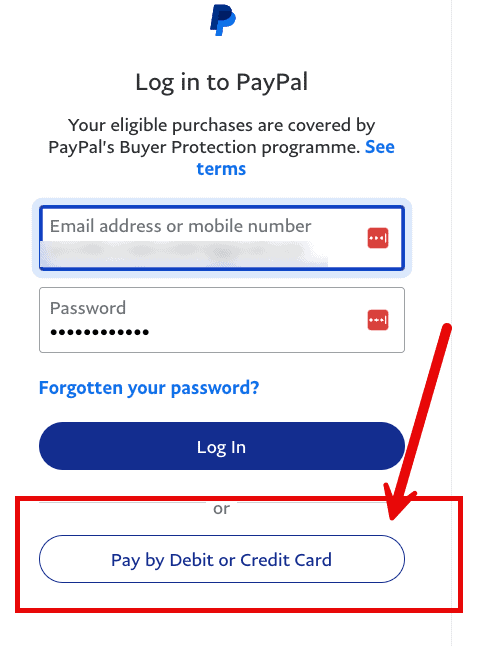Some self-help training and interesting updates on staying healthy through Thai Massage.
 We talk a lot around here about taking care of your body, but what about your home? The cleanliness and safety of your environment play a big role in your overall health. You’re already doing the work to make sure the food and that goes in your body are as clean as possible. The next step is to examine the substances you’re using to clean your home.
We talk a lot around here about taking care of your body, but what about your home? The cleanliness and safety of your environment play a big role in your overall health. You’re already doing the work to make sure the food and that goes in your body are as clean as possible. The next step is to examine the substances you’re using to clean your home.
In honor of National Cleaning Week, today I’m offering all-natural, non-toxic solutions for cleaning your home from top to bottom. A host of companies now make greener cleaning products, but you don’t need to invest in a bunch of specialty supplies.
You can attack almost any cleaning project if you have a short list of supplies on hand. Here’s what you need:
- Vinegar: Vinegar is acidic, containing somewhere around 5 percent acetic acid depending on the type. It has antibacterial properties, and you can use it in a wide variety of cleaning applications. Distilled white vinegar is more affordable than other types and is the one I recommend for cleaning.
- Castile soap: Castile soap is gentle enough to be used on your body and effective enough to tackle any cleaning project. Dr. Bronner’s is a popular brand. Use any scent you like.
- Baking soda
- Microfiber and/or cotton cloths
- Sponges
- Empty spray bottles
- Cleaning brushes, both stiff- and soft-bristled
- Silicone spatula or scraper
- Microfiber mop
Optional items:
- Squeegee
- Essential oils: Tea tree (melaleuca), lavender, thyme, oregano, and other oils have antimicrobial properties. If nothing else, they make your house smell good without artificial fragrances.
- Lemons
- Salt, which you probably already have in your kitchen
- Hydrogen peroxide
Why Should You Use Non-toxic Cleaning Products?
Commercial cleaning products often contain harsh cleansing agents and fragrances. These substances can be absorbed through the skin, eyes, and lungs. Even mild exposures may cause irritation and inflammation, skin rashes, and other adverse reactions in sensitive individuals. They simply aren’t good for your health, not to mention your children’s and pets’ health. Even “green-certified” products can contain ingredients that you don’t necessarily want in your home.
Besides the human health effects, many ingredients found in common cleaning products come with significant environmental concerns. These ingredients can harm plants and wildlife, contaminate drinking water, and adversely affect soil and even air quality. Check out the and the to learn more.
Health reasons aside, it’s more cost-effective to buy those staple ingredients in bulk and make your own products. It takes very little time, and the payoff is substantial.
Important Tips Before Getting Started
When you switch to a new cleaning product, homemade or otherwise, it’s always a good idea to test it on a small area of carpet, fabric, hardwood, or stone before you clean a large surface. For marble or granite, check manufacturer guidelines.
Using Vinegar as a Cleaning Agent
As I said, vinegar is acidic, so it can damage some delicate surfaces if you use it at full strength. It has more potent cleaning and antimicrobial properties undiluted, but you’ll want to dilute it for softer or more porous surfaces like natural stone tile.
Even though many recipes call for combining vinegar and baking soda, once the initial chemical reaction has taken place—that fizzing we’re all familiar with from elementary school science—you’re left with sodium acetate and water. Sodium acetate isn’t an effective cleaning agent, so you’re basically making more expensive water. The chemical reaction itself can help clean a clogged drain or a crusty pan, but for the most part, vinegar and baking soda are more effective when used separately.
A Quick Castile Soap Chemistry Lesson
Castile soap is a base. Mixing it with acids breaks it down and neutralizes its effectiveness. Don’t combine castile soap with vinegar, lemon juice, or hydrogen peroxide. Oxygen bleaches like OxyClean contain hydrogen peroxide, so don’t mix those with castile soap either. If you want to harness the different cleaning effects of castile soap and hydrogen peroxide, for example, use them separately with a rinse in between.
You can mix castile soap with water and baking soda. Baking soda adds a little grit to castile soap, which is useful for scrubbing and doesn’t undercut the soap’s effectiveness.
Essential Homemade Natural Cleaner Recipes
You can clean most things in your house with either a soft scrub or an all-purpose cleaner. There are lots of variations of these recipes online. These are the ones I like.
DIY Soft Scrub Recipe
- ½ cup castile soap
- 1½ cup baking soda
- ¼ – ½ cup water (use distilled water if your tap water is very hard)
- 2 tablespoons distilled white vinegar
Mix the castile soap and baking soda in a large bowl. In a separate bowl, mix ¼ cup water with the vinegar. Combine it with the baking soda mixture. Add more water to get the consistency you want. Store a thicker paste in a covered container. If you add enough water to make a pourable solution, use a funnel to put it in a squirt bottle.
* I know I just said not to mix vinegar and castile soap. In this case, the baking soda is also a base. It protects the soap from being neutralized by the baking soda.
DIY All-purpose Spray Recipe
Mix either of the following in a spray bottle.
Recipe 1 (my preferred):
- 2 cups water (use distilled water if your tap water is very hard)
- 2 tablespoons castile soap
- 10-20 drops of your favorite essential oil (optional)
Recipe 2:
- 1 cup filtered or distilled water (distilled if your water is very hard)
- 1 cup distilled white vinegar
- 10-20 drops of your favorite essential oil (optional)
Lemon Vinegar Recipe
This one is optional, but it’s one of my favorite homemade products, especially for cleaning kitchen counters. Collect lemon peels, or peels from any citrus fruits, in a large jar. Keep them in the freezer if you won’t have a bunch at once, as you might if you’re making a batch of lemon curd or freezing lemon juice.
Once you have enough, pour distilled white vinegar over them until they are completely covered. Place a lid on the jar and let them sit on your counter for one to three weeks.
Strain the vinegar through a fine mesh strainer. Discard the peels, and keep the vinegar in a jar. Use this vinegar in place of the white vinegar in the all-purpose spray above. It leaves a pleasant lemon scent, plus you get the cleaning power of lemon!
Ok, let’s get cleaning!
How to Clean Your Cast Iron Skillet
Contrary to popular belief, it’s probably fine to use dish soap on cast iron, but many purists avoid it anyway. The one thing you never want to do is soak your cast iron pan in water, soapy or otherwise!
The easiest way to clean cast iron is with plain hot water, a stiff-bristled brush, and elbow grease.
For stuck-on food, pour about ¼ to ½ inch of water into the pan, put it on the stove, and crank up the heat. When it starts to simmer, use a silicone spatula to scrape up the stuck-on bits. Pour the water out carefully and attack any remaining stuck-on bits with a brush or silicone scraper. While the pan is still warm, you can also add some kosher salt and use a towel or your fingers (don’t burn yourself!) to scrub at the bottom.
Once clean, dry it thoroughly with a kitchen towel and rub a small amount of oil into the surface. There are countless opinions about which oils are best. The general consensus is: none of the ones Primal folks will want to use. I usually rotate between coconut, olive, avocado, and lard.
DIY Natural Oven Cleaner
Remove the racks. You’ll clean those separately.
Give the entire inside of the oven and the door a wipe down to remove crumbs and surface grease.
Make a paste of two parts baking soda to one part water. Smear it thickly on the inside of the oven door and inside the oven wherever there is baked-on gunk. (Hat tip to Bren of the Bren Did for researching the best method.) Let it sit for 20 minutes, then use a damp cloth or sponge to remove it. For really caked-on messes, repeat this step, but close the oven and let it sit overnight. The following day, remove the dried paste using a silicone scraper and warm water.
Now that the crust is gone, wash the entire inside of the oven with your DIY Soft Scrub or All-purpose Spray. Use damp cloths to thoroughly wipe down every surface.
Finally, clean the racks with DIY Soft Scrub. Use your bathtub if the kitchen sink is too small. If needed, let them soak overnight in hot water with a squirt of castile soap. You can also run them through your dishwasher if they fit.
How to Clean Your Stainless Steel, Porcelain, or Ceramic Sink
Rinse the entire sink with hot water and give it an initial wipe down with a cloth or sponge. Sprinkle baking soda all over the surface and start scrubbing. For stainless steel, make sure you’re working in the direction of the grain.
Next, spray the whole thing with vinegar or your DIY Lemon Vinegar All-purpose Spray. Let it do its fizzy thing, then rinse thoroughly.
Alternatively, your DIY Soft Scrub will work great on a grimy sink.
For stainless steel, finish by drying the sink. Then, put a few drops of olive or avocado oil on dry microfiber cloth and rub down the surface.
How to Clean Your Coffee Maker or Keurig with Vinegar
First off, always consult the user’s manual to see what internal parts and filters need regular cleaning or changing.
Most removable parts of a coffee maker—carafe, lid, filter baskets—are dishwasher safe. Again, double-check your manual. Run these through a dishwasher cycle weekly.
Once every couple months, clean and descale your coffee maker or Keurig. Unplug the unit and remove all the removable parts. Run them through the dishwasher, or wash them in a sinkful of hot water with a few drops of castile soap. Use a dry microfiber cloth to wipe down the inside and outside of the machine.
Put everything back together, then fill the reservoir with distilled white vinegar. Run a brew cycle. Dump it out, then run another cycle with plain water. Repeat if necessary to get rid of the vinegar taste or smell.
Cleaning a Wooden Cutting Board
To clean a wooden cutting board, especially after using it for raw poultry, rinse it and use a brush to scrub it under very hot running water. Then, spray it with undiluted vinegar and wipe it down with a clean, dry cloth.
You can also sprinkle it with salt and use a cut lemon to scrub the surface. The abrasiveness of the salt mixed with the acidity of the lemon will clean and freshen the surface.
How to Clean Your Toilet Naturally with a DIY Cleaning Solution
Start by pouring one cup of vinegar into the toilet bowl and four cups into the tank (yes, the tank needs cleaning, too). Spray the inside of the bowl with your DIY All-purpose Cleaner or squirt DIY Soft Scrub under the rim. Let it sit while you go clean the sink, mirror, and shower.
Next, scrub the inside with a toilet brush. For very dirty toilets, sprinkle some extra baking soda directly on the toilet brush and add a small squirt of castile soap. Flush the toilet and repeat if necessary. Flush again and rinse off the brush in clean water.
Finally, use your DIY All-purpose Cleaner and a sponge or microfiber cloth to clean the handle, outside of the toilet, and toilet seat. It probably goes without saying, but don’t use that same sponge or cloth to clean anything else until you wash it.
DIY Natural Grout Cleaner for Showers and Tile Floors
Start with a 50/50 mixture of vinegar and warm water like your DIY Lemon Vinegar All-purpose Spray. Spray it on the grout and let it sit for about five minutes. Then grab a stiff brush and get scrubbing.
If the grout still needs more love, use your DIY Soft Scrub. Sprinkle some extra baking soda over the grout for extra scrubby-ness.
For really tough stains, put a scoop of baking soda in a bowl and add enough hydrogen peroxide to make a paste. Smear it over the grout, wait 5 to 10 minutes, then get to work with your scrub brush.
DIY Shower Cleaner Spray
Once you’ve cleaned your shower grout, let’s keep clean, eh? For shower maintenance, fill a spray bottle with diluted vinegar, anywhere between a 2:1 and 4:1 ratio of water to vinegar. Optionally add a few drops of your favorite essential oil.
After each shower, give the walls and shower door a quick squeegee. A few times per week, spray the walls with the vinegar spray. (Do not use on marble or natural stone tiles.)
How to Clean Your Showerhead Naturally with Vinegar
Does your showerhead spray little needles of water in all directions? Are half the pinholes clogged? Easy fix.
Remove the showerhead if you can, then soak it in a small container of straight vinegar. For gold, brass, or nickel-coated showerheads, remove after 30 minutes. Otherwise, you can leave it to soak overnight. Optionally give it a quick scrub with a toothbrush, then reattach it and run hot water to clear it out.
If you can’t remove the showerhead, place a couple of cups of vinegar in a plastic bag. Place the bag over the showerhead and secure it with string or pipe cleaner. Then follow the instructions above.
DIY Natural Bathtub Cleanser
Follow the instructions above for cleaning a sink.
If your tub is mildewy, start by spraying the entire surface with undiluted vinegar. Let it sit for an hour, then sprinkle on baking soda and do an initial scrub of the whole surface. Rinse well, then give it a second cleaning with your DIY Soft Scrub.
DIY Non-toxic Carpet Cleaner Recipes
Carpet stains are tough because the best cleaning method depends on what caused them in the first place. Here are some good general recommendations for spot cleaning:
Try to clean spills right when they occur. Blot up wet messes with a clean towel; don’t rub the stain into the carpet.
Next, spray the spot with a cleaning solution. You can use the DIY All-purpose Cleaner made with castile soap, or make a solution of 1 cup water, ½ cup hydrogen peroxide, and 1 teaspoon of castile soap. Gently work at the stain with a clean cloth. Once the stain is up, spray the area with diluted vinegar and dab it with another clean cloth to remove any remaining soap.
For larger carpet cleaning machines, know that adding anything besides the manufacturer-approved cleaning solution probably voids your warranty. If you don’t care, try filling the tank with very hot water and adding just a couple drops (yes, really) of castile soap. Clean the carpet, then do a second round with just hot water and a cup or two of vinegar. Make sure you suck up as much water as possible with the machine.
The same cleaning solution should work for upholstery, but don’t forget to test it in an inconspicuous spot to make sure it won’t lift the color.
DIY Natural Glass Cleaner for Windows and Mirrors
Spray the window or mirror with 1:1 solution of vinegar and water (distilled if you have hard water). Squeegee and/or wipe the glass with a dry microfiber cloth.
For dirty outdoor windows, mix 1½ teaspoons of castile soap with 2 cups of water in a spray bottle. Use that solution to clean the windows first, then follow up with the diluted vinegar.
Non-toxic DIY Floor Cleaner for Wood, Tile, Laminate, or Linoleum
For hardwood and tile floors, good ol’ vinegar will do the trick. Mix ½ cup vinegar or Lemon Vinegar per gallon of warm water. Mop the floors with a microfiber mop.
For more delicate surfaces like natural stone, it’s better to skip acidic cleaners. In that case, you can mop with a solution of 3 tablespoons of castile soap in a gallon of water. You might want to do a second pass with just water to make sure all the soap is up.
How to Clean Your Mattress
Maybe you never thought about cleaning your mattress, but it accumulates dirt, dead skin, mites… actually, don’t think about it too hard or you won’t want to get into bed tonight.
First, strip all the bedding and wash it in hot water. Then, get your vacuum out and vacuum your mattress. For stains on the surface, you can use the carpet spot-treating solutions above, but make sure you don’t get the mattress too wet. Use a barely damp cloth to rub at the stain.
Next, stir ~10 drops of your favorite essential oil into a cup of baking soda. Place it in a mesh sieve and dust the baking soda evenly over the top of the mattress. (You can also use plain baking soda for this.) Let it sit for about an hour, then vacuum thoroughly again. If you want, lightly spritz the mattress with a homemade linen spray like , but make sure it’s completely dry before replacing the mattress cover and sheets.
DIY Natural Makeup Brush Cleaner
Castile soap works great on makeup brushes. First, clean the brush heads with plain water to get as much makeup off them as possible. Then, put a squirt of castile soap on a small dish and swirl the brush head around in it to clean the bristles. Rinse the bristles under running water, massaging them with your fingers to release the dirt and soap.
Repeat these steps until the water runs clean. Replace the soap in the dish as often as needed.
Optionally, you can put some diluted vinegar in a small jar and swirl the brushes in the vinegar as a final cleaning step. Either way, dry the handles with a towel and lay the brushes out to dry completely.
DIY Yoga Mat Cleaner Spray
You should wipe down your yoga mat regularly, especially if you’re bringing it to a yoga studio. Make your own spray by combining ¼ cup of vinegar or Lemon Vinegar with 1 cup of water and, optionally, a few drops of your favorite essential oil. Spray evenly over your mat and wipe with a clean towel.
To deep clean your mat, run some warm water in your bathtub and add a squirt of castile soap. Soak the mat for 10 minutes or so, then scrub both sides with a sponge. Rinse well (a detachable showerhead is great here). Hang to dry completely—ideally in the sun, the best natural disinfectant of all—before rolling it up again.
DIY Jewelry Cleaner
Jewels can be delicate, especially soft stones like opals, pearls, lapis lazuli, and turquoise. If you aren’t sure how to clean a specific piece of jewelry, please ask a jeweler.
For solid metal pieces, fill a bowl with warm water and add a couple drops of castile soap. Let your jewelry soak for a few minutes, then rinse. (For small jewelry, plug the sink drain first!) Use a cotton cloth or a toothbrush with very soft bristles to clean any remaining dirt off the pieces.
If you have tarnished sterling silver jewelry, line a bowl with aluminum foil. Add 1 cup of hot water, 1 tablespoon of baking soda, and 1 tablespoon of salt. Let the jewelry soak in this solution. After about 10 minutes, it should look much better. Remove it carefully and rinse it under clean water, then dry with a clean cloth. This works for silverware, too.
(function($) {
$(“#dfTZWHe”).load(“https://www.marksdailyapple.com/wp-admin/admin-ajax.php?action=dfads_ajax_load_ads&groups=674&limit=1&orderby=random&order=ASC&container_id=&container_html=none&container_class=&ad_html=div&ad_class=&callback_function=&return_javascript=0&_block_id=dfTZWHe” );
})( jQuery );
References
- https://pubmed.ncbi.nlm.nih.gov/9713753/
The post appeared first on .
The above article How the Heck Do I Clean That? Natural and Non-toxic DIY Cleaning Solutions for Your Home was published on this site.
We hope you found the above of help and/or of interest. Similar content can be found on our blog thaimassagegreenock.co.uk.
Let me have your feedback in the comments section below.
Let us know what topics we should write about for you next.
Thai Massage Newsletter
To make sure you don’t miss out on any new posts or promotions that we introduce, sign up for our newsletter.
Once a month we run a special promotion for our newsletter members, so sign up now to make sure you don’t miss out.
It’s free and full of great health and nutrition tips and advice on how we can help you achieve your health and fitness goals.





